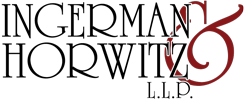Filing a personal injury lawsuit means that you are suing for pain and suffering caused by injury to your person. While these cases are common, it takes an experienced legal team to recognize suing for pain and suffering can also mean attaching value to both past and future mental suffering as well as the physical pain you may feel after being injured. Let’s look at your options for suing for pain and suffering under Maryland law.
Physical Injury that Leads to Pain and Suffering
It’s important to realize is suing for pain and suffering is that the burden of proving these damages rests on you. That’s why finding a good personal injury lawyer in Maryland is so important. Unlike other areas of law, these are complicated cases that require the help of a competent legal team.
Too, there are no established standards for how a jury will determine pain and suffering damages. However, they will likely consider:
- How severe is the injury?
- How old is the victim?
- How much suffering have they – and will they – likely endure over time?
Juries are asked to use their judgment to make awards in these cases. This means the case your attorney prepares will be inevitably linked to the amount of payment you receive when suing for pain and suffering.
Maryland Laws Related to Suing for Pain and Suffering
The first thing to understand about suing for pain and suffering in Maryland is that the state sets a legal statute of limitations, or a limit on the timeframe in which you can file a personal injury lawsuit. For the most part, you have three years to file a claim from the date the incident occurred. If you miss this deadline, in most instances, the Maryland court hearing your case will throw it out.
But there are important differences if you are suing for pain and suffering tied to an assault, or if your lawsuit has to do with slander or libel, the statute of limitations is just one year.
Maryland, like a lot of other states, also allows something called “shared fault” in injury cases. This means a jury may decide you are also to blame for your injury. This is called a modified comparative fault rule, and if the court rules in this way, you will likely lose some – or all — of the financial reparation you’re seeking.
Maryland also caps the amount of money you can collect in a personal injury case. This is particularly true with medical malpractice cases, where a healthcare provider is deemed to have caused your injury. Maryland caps the amount you can receive in these cases at:
- In 2016 the cap was $770,000.
- In 2017 the cap is set at $785,000.
- In 2018 the cap will increase to $800,000.
While this cap doesn’t affect remuneration that reimburses medical bills, pays you for lost wages, or other economic damages, this is problematic if you’re suing a doctor or hospital for pain and suffering caused by a medical mistake.
With the right lawyer, you may be able to avoid some of these pitfalls to suing for pain and suffering in Maryland. Contact Ingerman & Horwitz, LLP for a free consultation to find out more. We’re here to help.













